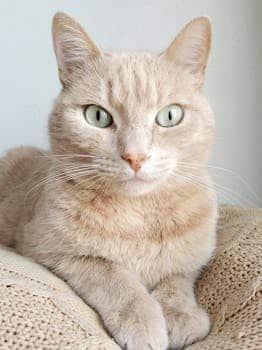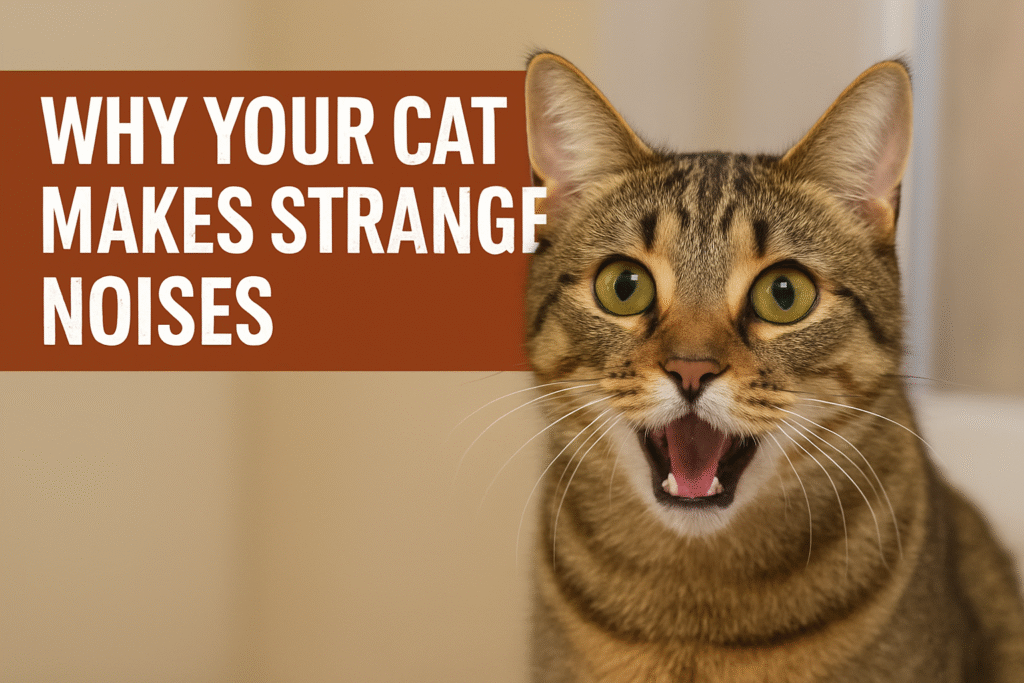Post Disclaimer
Catopedea shares information for educational and general interest purposes only. Our content is not a substitute for professional veterinary advice, diagnosis, or treatment. Always consult a licensed veterinarian for concerns about your cat’s health, diet, or behavior.
Cat Eye Communication
Cats have a unique and expressive way of communicating with us, and much of it is through their eyes. Their eyes are not just beautiful; they are also incredibly expressive, offering us a window into their emotions and intentions. In this article, we’ll delve into the fascinating world of cat eye language and discover what your feline friend’s eyes might be telling you. Understanding these subtle cues can significantly enhance your relationship with your pet, providing insights into their needs and emotional state.

Cat eyes are a marvel of nature, designed to offer them an edge in both hunting and communication. The way their eyes change in response to different stimuli is a testament to their adaptability and survival instincts. By paying close attention to the nuances of their eye expressions, you can gain a deeper appreciation for their complex behavior and emotional life. This knowledge not only fosters a stronger bond between you and your cat but also ensures you’re better equipped to meet their needs and interpret their moods.
Before we dive into the meanings behind different cat eye shapes and sizes, it’s important to understand the basic anatomy of a cat’s eye. Like humans, cats have pupils that adjust to light. However, their pupils can change shape dramatically, from large and round to thin and slit-like. These changes are not only responses to light but also reflect their emotional state. This dual functionality makes their eyes highly efficient tools for both survival and social interaction.
Cats possess a structure known as the tapetum lucidum, a layer of cells behind the retina that reflects light back through the retina, enhancing their ability to see in low-light conditions. This gives their eyes an eerie glow in the dark and contributes to their excellent night vision. This adaptation is crucial for their nocturnal hunting instincts, allowing them to detect even the slightest movements in dim environments. Understanding these anatomical features is the first step in decoding the complex signals conveyed through their eyes.
Cats’ eyes change shape for several reasons, primarily related to light exposure and emotional responses. In bright light, a cat’s pupils become narrow to limit the amount of light entering the eye. Conversely, in dim lighting, their pupils dilate to allow more light in for better vision. This ability to adjust to various lighting conditions is crucial for their survival, allowing them to hunt effectively both day and night.
Beyond light adaptation, the shape of a cat’s pupils can also indicate their emotional state. This is because the autonomic nervous system, which controls involuntary actions, influences their pupils. Changes in pupil size can reflect excitement, fear, aggression, or contentment, serving as a window into their emotional world. Understanding these nuances can help pet owners better cater to their cats’ needs and respond appropriately to their emotional cues.
Cats can’t speak, but their eyes can communicate a lot. Here are some interpretations of what different cat eye shapes and sizes might mean:
When you notice your cat’s eyes are big and round, it can indicate various emotions, such as excitement, fear, or surprise. This dilation is often a response to stimulation, whether it’s a play session or an unexpected noise. Recognizing this can help you distinguish between when your cat is playful versus when it’s startled or scared.
- Playfulness and Excitement: During play, a cat’s pupils often become large and round, indicating they are alert and engaged. This is a sign that they are enjoying the activity, and it’s an excellent opportunity for bonding through interactive play.
- Fear or Surprise: A sudden loud noise or a new, intimidating environment can cause a cat’s pupils to expand, signaling they’re on high alert. In these situations, it’s important to provide reassurance and a safe space for your cat to retreat to if needed.
Narrow pupils can mean a few different things depending on the context:
- Contentment and Relaxation: When a cat is calm and relaxed, its pupils may be narrow. This is often seen when they are lounging in a sunny spot, fully at ease in their surroundings.
- Aggression or Irritation: If a cat is feeling threatened or agitated, their pupils might also narrow as part of a defensive posture. In such cases, look for other signs of aggression, such as flattened ears or a twitching tail, to better understand their mood.
Cat eye dilation can also be a reaction to emotions. While light is a major factor, emotions can cause their pupils to change too. This is why it’s important to consider both the environment and the context of their behavior when interpreting these signals.
Yes, cats’ pupils can dilate when they’re happy or excited, such as when they are playing or anticipating a treat. This response is similar to how humans’ pupils may dilate when they are excited or happy. Watching for this sign can help you identify moments when your cat is particularly content or eager for interaction.
While it’s difficult to measure love in pets, dilated pupils can be a sign of contentment and affection. If your cat is purring and looking at you with big, round eyes, they are likely feeling comfortable and affectionate. This is a prime opportunity to engage in gentle petting or play, reinforcing the bond you share.
If your cat is staring at you with large pupils, it might be expressing interest or curiosity. Cats often use direct eye contact to gather information, so they might be trying to understand your actions or emotions. This behavior is an invitation to interact, offering a chance to strengthen your connection with your feline friend.
A cat’s pupils can provide insight into its mood and intentions. The autonomic nervous system, which controls involuntary bodily functions, also influences pupil size. This system responds to both emotional and environmental stimuli, causing the pupils to adjust accordingly. Understanding these physiological responses can aid in better interpreting your cat’s behavior.
When a cat’s pupils become thin and slit-like, it’s usually because they are in a well-lit environment. However, it can also be a sign that they are feeling threatened or annoyed. Observing the context and other body language cues can help you determine the specific reason. For instance, if their body is tense and their tail is flicking, they may be preparing to defend themselves.
Cats have large eyes compared to their head size, which allows them to have excellent night vision. Their big eyes are an adaptation for hunting in low-light conditions, providing them with a wider field of view and better depth perception. This evolutionary trait is crucial for their survival, enabling them to detect prey and navigate their environment effectively, even in near darkness.
It’s essential to consider the context when interpreting your cat’s pupil size. Look for other body language signals and the environment to get a full picture of what your cat is feeling. Combining these observations can help you accurately gauge their emotional state and respond appropriately.
If your cat’s pupils are dilated and it’s purring, it’s likely expressing happiness and contentment. Purring is often associated with positive emotions, and when combined with dilated pupils, it can indicate a relaxed and content state. This is a perfect time to engage in gentle petting, reinforcing their sense of security and affection.
Cats’ eyes changing shape is a natural and frequent occurrence. These changes can give you clues about their mood, health, and even their environment. Regular observation can help you better understand your cat’s needs and feelings. By being attuned to these signals, you can provide a more supportive and enriching environment for your pet.
Being aware of your cat’s eye language can help you respond better to their needs. Here are some tips:
- Observe: Regularly observe your cat’s eyes and the context to better understand their moods and needs. This involves not just looking at their eyes, but also considering their overall body language and environment.
- Be Gentle: If your cat’s pupils are narrow and it seems agitated, give it space and avoid provoking it. Recognize when they need solitude and respect their need for personal space to prevent stress or aggression.
- Engage: Use toys and interactive play to stimulate your cat when its pupils are large and it seems playful. This not only provides physical exercise but also mental stimulation, helping to strengthen your bond.
Understanding cat eye language takes time and observation, but it’s a rewarding way to deepen your connection with your feline companion. By paying attention to their eyes, you can better interpret their emotions and ensure their well-being. This knowledge empowers you to create a more harmonious and understanding relationship with your cat.
Frequently Asked Questions
1. Why do cats’ pupils get big and round?
Cats’ pupils dilate in low light to improve vision, but large round eyes can also signal excitement, fear, or playfulness. Observe their body language—playful cats may pounce, while scared cats freeze or flatten their ears.
2. What does it mean when a cat’s pupils are thin slits?
Narrow pupils usually mean your cat is relaxed (e.g., sunbathing) or reacting to bright light. But paired with a stiff body or hissing, it can indicate aggression.
3. Do cats’ eyes dilate when they’re happy?
Yes! Dilated pupils during play or cuddles often mean happiness. Unlike fearful dilation, happy cats purr, knead, or rub against you.
4. Why do cats stare at me with huge eyes?
Large pupils during staring could mean curiosity (“What are you doing?”) or affection (“I love you!”). Slow-blinking back shows trust.
5. Can cats see in total darkness?
No, but their tapetum lucidum (eye layer) reflects light, letting them see in near-total darkness—6x better than humans!
6. Why do cats’ eyes glow in the dark?
The tapetum lucidum acts like a mirror, bouncing light through their retinas. This glow helps night hunting but requires some light (moonlight/phones).
7. Should I worry if my cat’s pupils are different sizes?
Yes! Uneven pupils (anisocoria) may signal injury, infection, or neurological issues. Consult a vet immediately.
8. How do cats use eyes to communicate?
Slow blinks: “I trust you.”
Staring: Challenge or curiosity.
Half-closed: Contentment.
9. Why do cats have vertical slit pupils?
Vertical slits give precise light control and depth perception—critical for judging pouncing distance on prey!
10. Do all cats’ eyes glow the same color?
No! Glow color varies by breed/age:
Green/yellow: Most common.
Blue: Siamese kittens.
Red: Rare, in albino cats.
In conclusion, cat eyes are more than just a beautiful feature; they are a crucial communication tool. By understanding what different eye shapes and sizes mean, you can enhance your relationship with your cat and ensure they feel safe and loved. This insight into their emotional world not only enriches your companionship but also ensures that you can address their needs effectively, fostering a nurturing environment for your feline friend.



Pingback: Why Your Cat Makes Strange Noises: 6 Causes & Solutions - catopedea.com
Pingback: Scared Cat Body Language: Understand What Your Cat is Telling You - catopedea.com
Pingback: Why Does My Cat Stare at Me While I Sleep? 7 Surprising Reasons - catopedea.com
Pingback: Toxic Plants and Products for Cats | Complete Safety Guide - catopedea.com